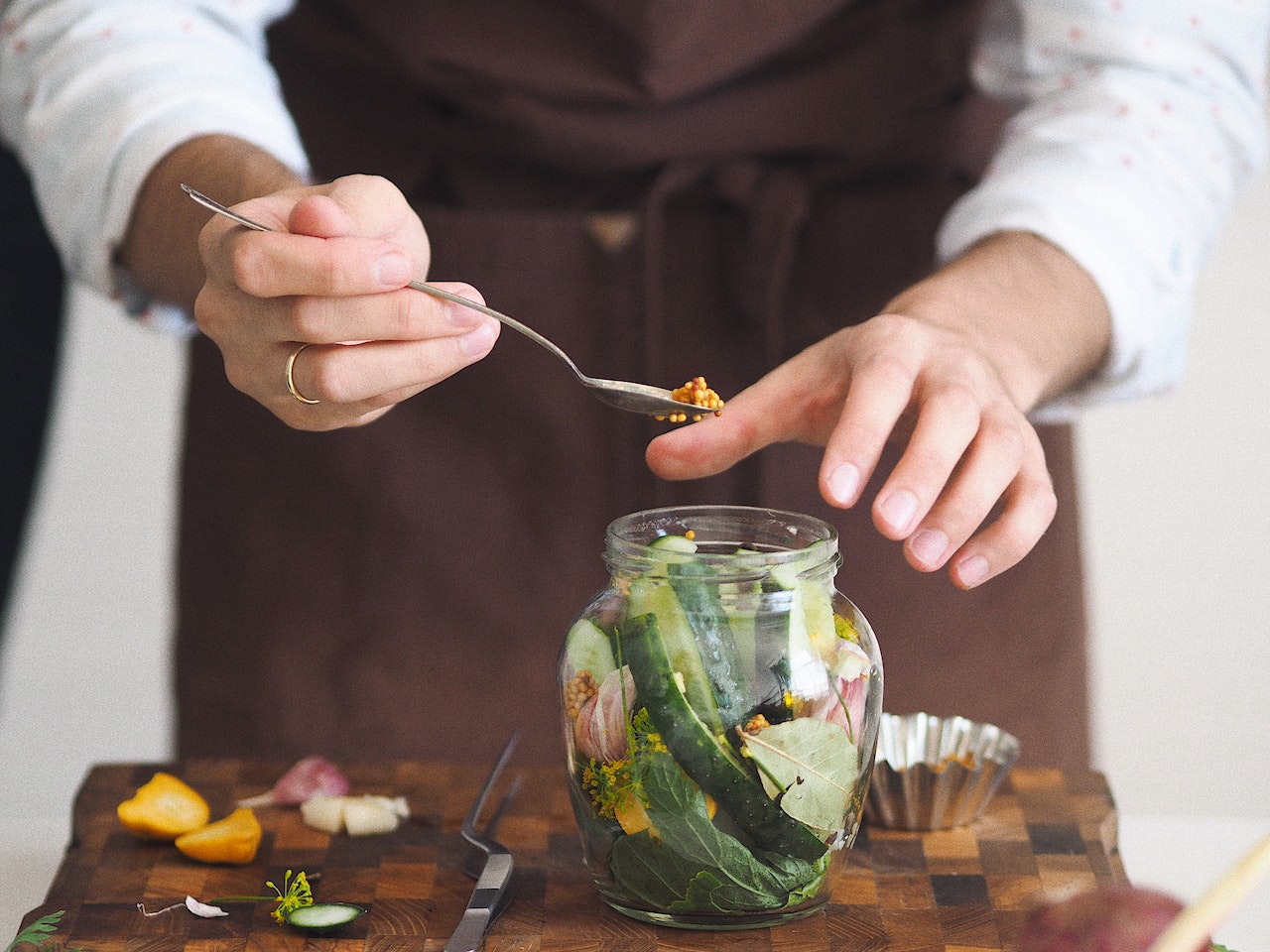5 Ways to Stretch Your Food’s Shelf Life
In a world where food waste is a growing concern, it is essential to understand the importance of food preservation techniques. These techniques not only help maximize the shelf life of various food items but also contribute to reducing food waste. By using proper preservation methods, you can save money, reduce your carbon footprint, and ensure that your food stays fresh and safe to consume for longer periods.
1. Canning
Canned foods can last for several years if stored properly, making them a convenient option for long-term food storage. It can also preserve the nutritional value of foods by preventing the loss of vitamins and minerals over time. They are a convenient option for quick meals as they are ready to eat and require no additional preparation.

How to Can Your Own Food
- Gather the necessary equipment: You will need canning jars, lids, bands, a canning pot, a jar lifter, a funnel, and a headspace measurement tool.
- Prepare the food: Wash, peel, and chop the fruits or vegetables you wish to can. Ensure that they are fresh and free from any signs of spoilage.
- Fill the jars: Fill the jars with your prepared food, leaving the recommended headspace at the top.
- Remove air bubbles: Use a bubble remover or a non-metallic utensil to remove any air bubbles trapped in the jars.
- Seal the jars: Wipe the jar rims, place the lids on top, and screw the bands on securely.
- Process the jars: Place the filled jars in a canning pot, ensuring they are completely covered with water. Process the jars according to the recipe and guidelines for the food you are canning.
- Cool and store: Once the processing time is complete, remove the jars from the pot and let them cool. Check the seals to ensure they are tight before storing the jars in a cool, dark place.
2. Freezing
Freezing can significantly prolong the shelf life of perishable items, such as meat, fish, fruits, and vegetables. It also helps retain its nutritional value and flavor as it slows down the degradation process.
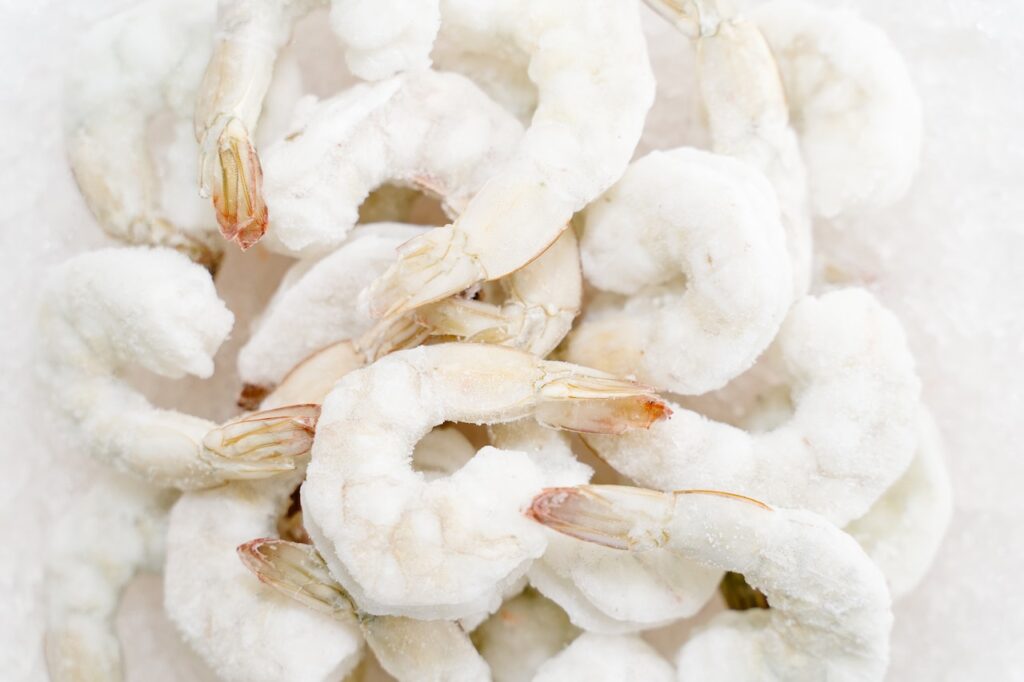
Proper Freezing Techniques for Maximum Shelf Life
- Proper Packaging: Use airtight containers, freezer bags, or heavy-duty aluminum foil to prevent freezer burn and maintain the quality of the food. Remove as much air as possible from the packaging to minimize the risk of freezer burn.
- Labeling and Dating: Always label the packages with the contents and the date of freezing to ensure proper rotation and avoid confusion.
- Freezing in Portions: Divide large quantities of food into smaller portions before freezing. This allows for easier defrosting and helps minimize waste.
- Rapid Freezing: Freeze food as quickly as possible to preserve its quality. Spread the food out in a single layer on a baking sheet before transferring it to the freezer.
- Proper Storage: Store frozen food at a constant temperature of 0°F (-18°C) or below to maintain its quality and safety. Avoid storing the food near the freezer door, as it may be subject to temperature fluctuations.
3. Dehydrating
By removing moisture from the food, dehydrating helps to inhibit the growth of bacteria, yeasts, and molds, extending the shelf life of the food. It also preserves the nutritional value of the food by retaining most of its vitamins and minerals. They are versatile and can be enjoyed as snacks, added to soups and stews, or rehydrated for use in various recipes.
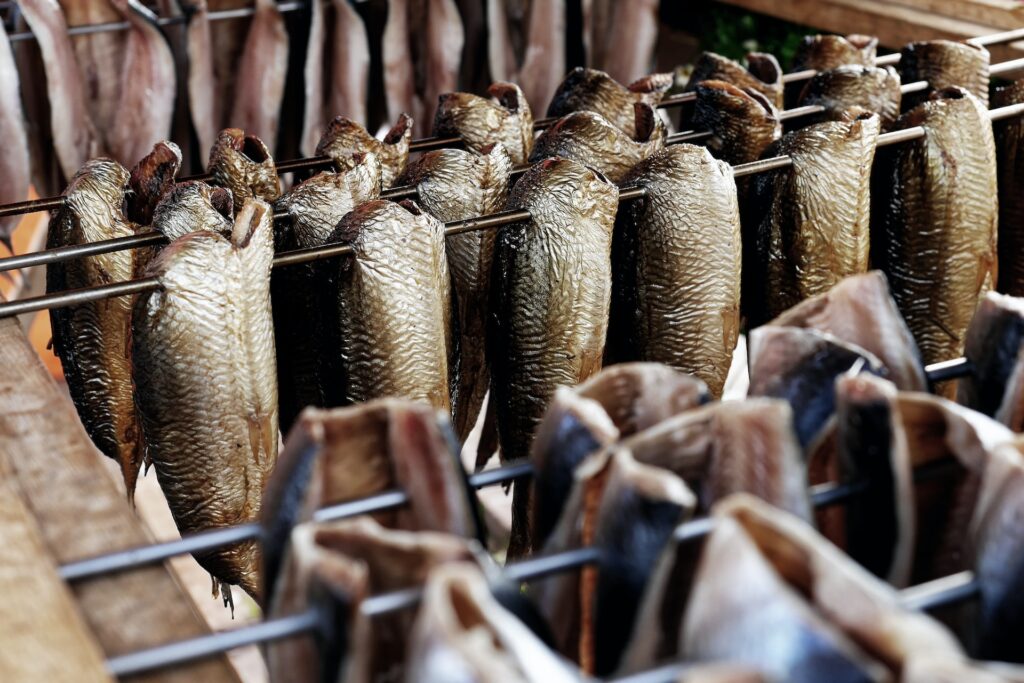
Methods and Tips for Dehydrating Your Food
- Air Drying: This method involves placing the food in a well-ventilated area and allowing it to dry naturally. It works best for herbs, spices, and some fruits and vegetables.
- Oven Drying: Set your oven to the lowest temperature and spread the food on a baking sheet. Leave the oven door slightly ajar to allow moisture to escape while the food dehydrates.
- Using a Food Dehydrator: Food dehydrators are specifically designed for the dehydration process. They provide consistent airflow and temperature control for optimal drying results.
Before dehydrating, slice the food into uniform pieces to ensure even drying. Blanching vegetables can also help preserve their color and flavor. Remember to store your dehydrated food in airtight containers in a cool, dark place to maximize its shelf life.
4. Fermenting
When it comes to preserving food, fermentation is a technique that has been used for centuries. It involves the natural breakdown of sugars by microorganisms like bacteria and yeast. Not only does fermentation extend the shelf life of food, but it also enhances its flavor and nutritional value. It gives food a tangy, sour, or umami flavor profile and increases the availability and digestibility of some of its nutrients. This is because fermented foods are rich in probiotics, which promote a healthy balance of gut bacteria.
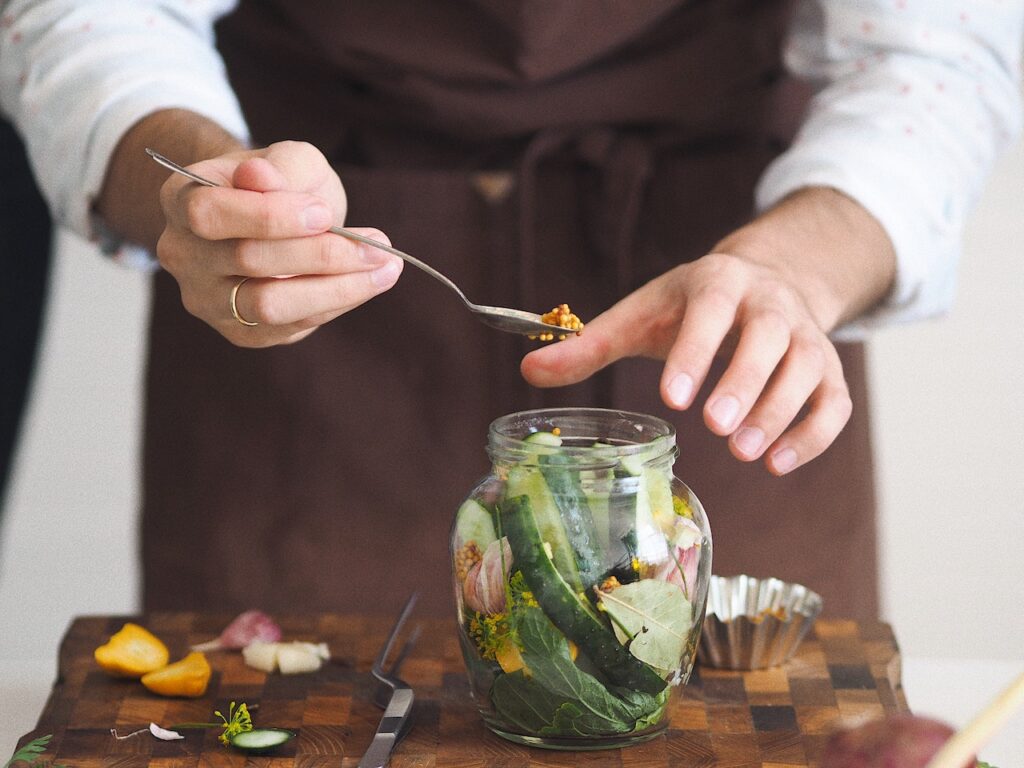
Different Types of Fermented Foods
- Sauerkraut: Fermented cabbage that can be made by mixing cabbage with salt and allowing it to ferment in a sealed container.
- Kimchi: A Korean fermented vegetable dish typically made with napa cabbage, radishes, and other seasonings.
- Yogurt: Fermented milk that is made by adding live cultures to warm milk and allowing it to ferment at a specific temperature.
- Kombucha: A fermented tea drink made by adding sugar, tea, and a SCOBY (symbiotic culture of bacteria and yeast).
- Pickles: Vegetables that are fermented in a brine solution made with water, salt, and spices.
Step-by-Step Guide to Pickling
Pickling is a type of fermentation technique and can be used on almost any food, from fruits and vegetables to eggs and even meat. Pickled foods can be enjoyed as a standalone snack, added to sandwiches and salads, or used as condiments. Here’s how to make your own:
- Prepare the Food: Wash and clean the food item thoroughly before pickling. Remove any stems, seeds, or unwanted parts.
- Prepare the Brine: In a saucepan, combine vinegar, water, salt, and any desired seasonings or spices. Bring the mixture to a boil and let it simmer for a few minutes.
- Sterilize Jars: Sterilize glass jars and lids by boiling them in water for a few minutes. This helps to prevent any contamination during the pickling process.
- Fill the Jars: Pack the prepared food tightly into the sterilized jars, leaving sufficient headspace at the top.
- Pour the Brine: Pour the hot brine over the packed food in the jars, ensuring that all the food is fully submerged. Leave a small gap at the top to allow for expansion during the pickling process.
- Seal the Jars: Place the lids on the jars and tighten them securely. Make sure they are airtight to prevent any air or bacteria from entering.
- Cool and Store: Allow the jars to cool at room temperature. Once cooled, store them in a cool, dark place for several weeks or months to allow the flavors to develop.
5. Vacuum Sealing
Vacuum sealing involves removing all the air from a bag or container and sealing it tightly. This process helps to prevent bacteria growth and oxidation, keeping your food fresher for longer periods. It can extend the shelf life of your food by up to five times, making it a cost-effective preservation method. Vacuum sealing also helps preserve the nutrients in your food, as it prevents the loss of vitamins and minerals that can occur during storage.
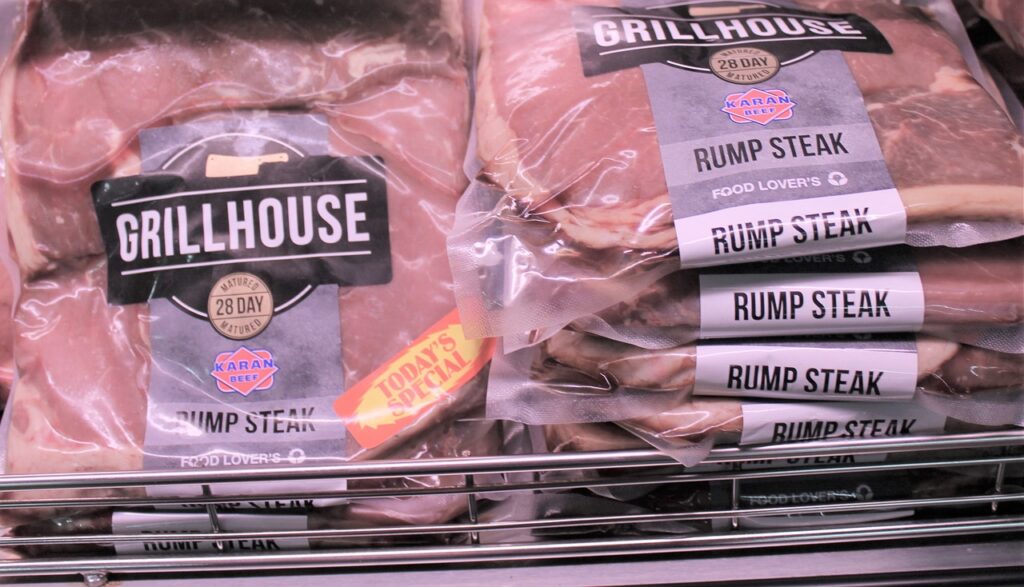
Tips and Tricks for Proper Vacuum Sealing
- Use High-Quality Bags or Containers: Invest in high-quality vacuum-sealing bags or containers that are designed specifically for this purpose.
- Remove Excess Moisture: Before vacuum sealing, make sure to remove excess moisture from the food to prevent the bag from leaking.
- Leave Some Space: Leave some space at the top of the bag or container to allow for proper sealing and expansion during storage.
- Label and Date: Don’t forget to label and date your vacuum-sealed bags or containers to keep track of when you stored the food.
- Store Properly: Store vacuum-sealed food in a cool, dry place away from direct sunlight for optimal preservation.
Remember to always follow proper food safety guidelines and consult the manufacturer’s instructions for your specific vacuum-sealing device.
Conclusion
Preserving food is essential to prolonging its shelf life and reducing food waste. There are several preservation techniques available, each with its advantages and limitations. It’s essential to consider factors such as the type of food, desired shelf life, and available resources when choosing the right preservation method. Remember to always prioritize food safety and adhere to recommended practices to ensure the highest quality and freshness of your preserved

